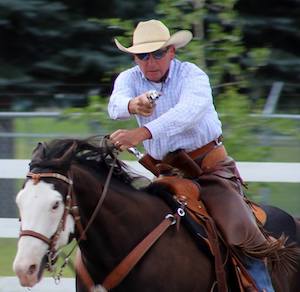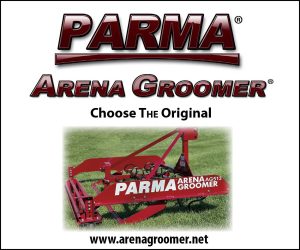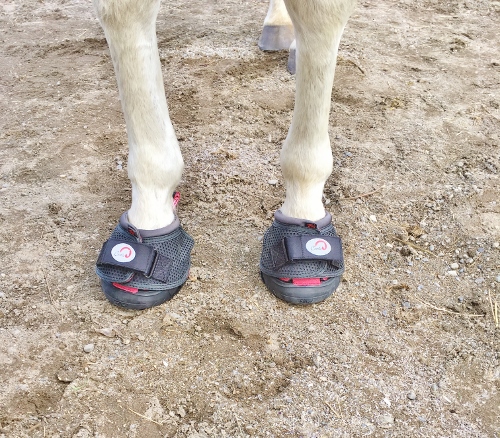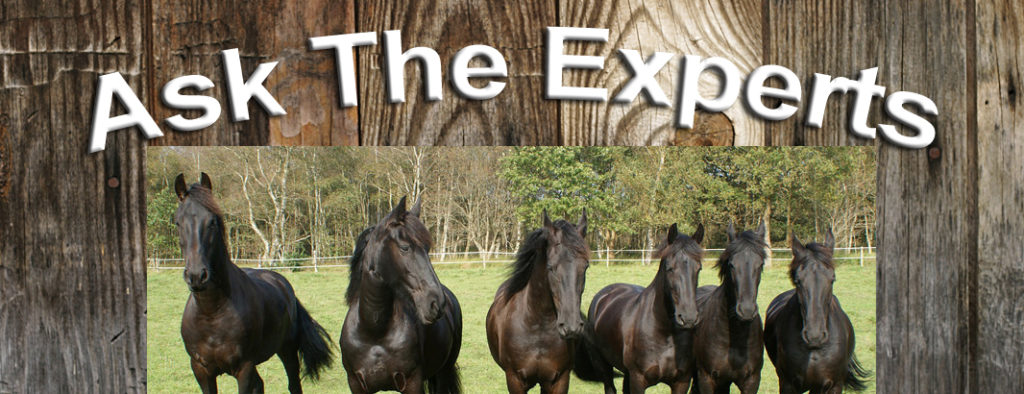Q:
My question is involving one of the horses the owners at the place I have my gelding is boarded at currently. The horse in question, is a 3 year old mare, who was fed some ‘hot’ alfalfa hay. Because both of the mares are ‘pasture ponies’, the 3 year old foundered pretty bad off of the hay given. The owner of the 2 horses, watered, and checked on the horses on a regular basis, and for the pain initially, the 3 year old was getting some pain medication from the veterinarian.
The 3 year old now, is eating and drinking on a regular basis as she should, but she is walking very poorly straining especially on her 2 front legs. The owner asked me to take a look at his 2 horses, as a secondary opinion, because he doesn’t know much about the horses feet; checking over the 3 year old mare, her feet are way too long with a very lengthy degree of the toe (which is way too far forward). I told the gentleman that the reason why the mare is straining so much on her front legs, is because she can’t balance properly with her hooves being as bad as they are. We are getting a proper farrier out in the next few days to do all of the horses, and try and correct the issue going on. My question is, is what type of boot would you recommend for being supportive to the mare’s legs, and also bringing her hooves back into the degree that they should be? I had a farrier in the past recommend a really good boot for myself to use on my horse, but I don’t have that information still.
Any information would be much appreciated.
-Claire
A:
Hi Claire,
I realize your question is primarily about the “right” boot, but laminitis is a serious life threatening/life changing event so allow me to give you a more complete answer.
First, just so other readers can understand the issues involved, Laminitis is more than just a “long toe” problem. Laminitis is inflammation of the laminae that connects the coffin bone to the hoof capsule and can be caused by many different triggers. Founder is when the laminae and the coffin bone have parted company.
When laminitis is suspected your first course of action should be a veterinary diagnosis, and it sounds like you already have that. Great. You say the cause is hot alfalfa hay, and while a feeding or two may indeed trigger a laminitic episode there is likely more to it. For example, horses with a metabolic disorder can easily become laminitic due to dietary changes and while we don’t often think of metabolic disorder in horses this young, we have seen this scenario more often than we would expect. We have just gone through a particularly dry summer, followed by several days of heavy rain, bringing the fall grass on strong, which has a high sugar content.
Conversely, sometimes a horse is just the victim of a perfect storm; poor hoof conformation (thin soled or club feet), poor environmental influence, and poor or misinformed hoof maintenance. When a thin-soled foot or club foot (where the coffin bone is already sitting at a steeper angle within the hoof capsule) is softened by the rain and then meets hard ground, it may be deeply bruised causing inflammation which indeed is very laminitic like.
There are many reasons a horse can become laminitic, but regardless of the cause it is absolutely essential that proper temporary support be applied immediately. I believe you may be asking about the Soft Ride boots, however boots are a poor first choice in my opinion. My first choice is the application of Pink or Blue construction Styrofoam. Styrofoam application is a 2-step process and unfortunately most people miss this point.
While boots may do a seemingly good job of protecting the foot, they do little to actually unload the painful front of the foot. Inexpensive tape-on Styrofoam support does a better job of “loading up” what doesn’t hurt, and “unloading” what does hurt by allowing the foot to compress the Styrofoam up into the commissures through the soft tissue in the back of the foot. This unloads the painful laminae in the dorsal wall AND protects the tip of P3 and surrounding soft tissue. Again, I can’t stress enough that this is a 2-step process. It is important to provide support while simultaneously providing protection.
A good tutorial for proper Styrofoam application can be found at the following links.
Styrofoam laminitis tutorial:
http://www.hopeforsoundness.com/cms/first-aid-for-laminitis—styrofoam.html.
Purple podiatry pad follow-up for laminitis tutorial:
http://www.hopeforsoundness.com/cms/first-aid-for-laminitis—podiatry-pads.html.
Styrofoam is more than a 1-time application. It is a part of a process that not only gives the horse some relief but also gives the practitioner some guidance as to what the horse’s needs will be.
Anytime a diagnosis of laminitis/founder arises time is of the essence. While Bute will help the pain, it does nothing to support and protect the coffin bone.
More Veterinarians and farriers are beginning to understand the merit of this type of first aid for laminitis, however this information has been around and in use for about 30 years and has saved the lives of thousands of horses.
Styrofoam can help stabilize the foot internally and most importantly reduces inflammation in acute situations. It is a predecessor to appropriate shoeing systems to insure full healing. There are many ways to shoe a laminitic horse, (too much information to include here). Treating a laminitic horse with barefoot maintenance only is cruel and unnecessary in my opinion. Long term inflammation leads to the degeneration of the coffin bone, and once degeneration occurs, that bone will not repair itself.
Horse owners should all become familiar with this 2-step approach to Styrofoam application, as immediate and proper application can save your horse’s life. Duct tape and pink Styrofoam should be a part of every first-aid kit.
There is no one size that fits all when it comes to laminitis. In summery; immediate diagnosis, proper support and continuing hoof management.
Mark Plumlee
Certified Lameness Specialist and Farrier Educator
CJF, RJF.

Mark Plumlee is a Certified Journeyman Farrier through the American Farriers Association, a Registered Journeyman Farrier through the Guild of Professional Farriers, and a Certified Barefoot Trimmer, Certified Farrier Practitioner and Certified Lameness Specialist through the Equine Lameness Prevention Organization. These diverse certifications speak to Mark’s commitment to the horse. Mark has published 6 educational DVDs and has been a pioneer in the advancement of farrier education for over 30 years. Mark, with his wife Karen own and operate Mission Farrier School and an Equine layup facility in Snohomish, Washington. They have graduated students from across the United States and 10 foreign countries. For more information visit http://www.missionfarrierschool.com and “Like” them on https://www.facebook.com/MissionFarrierSchool







